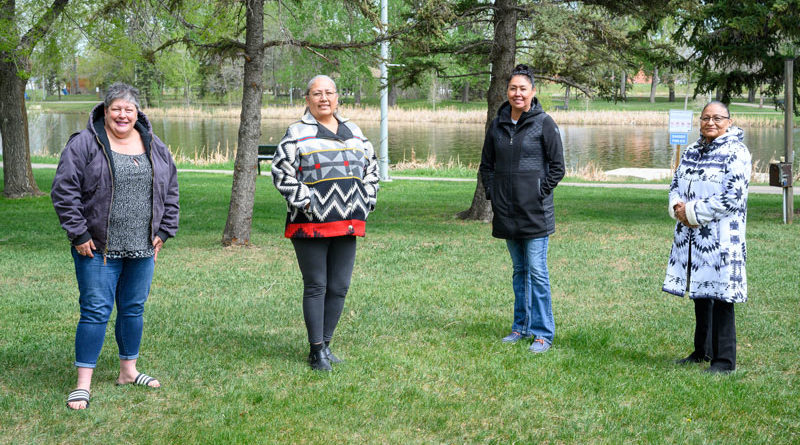Bringing children home to Siksika
By Sean Feagan, Local Journalism Initiative Reporter

Sean Feagan Photo
A new department of Siksika Family Services is using new approaches to keep families together and reunify those that have been separated, including creating connections to traditional knowledge and culture.
The Prevention and Early Intervention Department of Siksika Family Services, which has offices in Calgary, Strathmore and Siksika, has been developed to bring children home to Siksika Nation, explained Bernadette Good Eagle, program manager.
“Our main purpose is to bring our children home, reunify then with their biological parents, and make a soft foundation for them,” she said. “We are in the process of finding out who is off the reserve, and we are starting to make connections with those children and families.”
But the return home will take time for these kids. The department will first meet with the child, then slowly reintroduce them to their biological families.
“It will extend to visits, and the visits will get longer and longer. Then towards the end, they will have an extended visit where they are home with their biological parents,” said Good Eagle. “Even after the child is home, we follow them for about a year to make sure everything is okay, and the family has developed a solid foundation.”
As a former case worker, MarNai Yellow Horn, early prevention lead, understands the shortcomings of Child Protective Services.
“I have a good understanding of where interventions are falling short with our families, our parents and our children,” she said.
Child Protective Services often encounter resistance from families.
“Once child protection is at their door, they’re fearful, they’re scared and they’re angry,” said Yellow Horn. “It’s hard to gain their trust when they are essentially taking their children away.
“There’s a lot of healing that needs to take place with our families, and that comes from residential schools and generational addictions,” she added. “They are often put in a position where the courts require them to complete numerous tasks, but do not address their healing first.”
Yellow Horn is now working to gain the trust of at-risk families, to help them begin their healing journey, and connect them to available support and services. One way the team is achieving this is by connecting them to Blackfoot language and culture.
“What we are finding important is bringing back our culture and (our reason for living),” she said. “It’s so important to know who you are, and it’s so important to know the ways of our traditions and values.”
The group is trying to incorporate traditional approaches to child wellness.
“Our Blackfoot way, traditionally, had all of the families surrounding each child and getting involved when there was hardship or struggles,” noted Yellow Horn. “So, we’re trying to incorporate that way of approaching our families and protecting our children.”
The team is being tasked to bring back these traditional Siksika social structures to reunify families and empower them, explained Louise Doore, reunification team lead. They will be guided by community elders, who will also lead ceremonial prayer.
“There’s so many pieces to this, so only our elders are able to ensure the process is safe and culturally appropriate,” said Doore.
To help families connect, the team is also developing genograms to document family relationships of Siksika Nation members, explained Doore. This way, children removed from at-risk situations could be introduced to the home of a family member, instead of a far-off home. “Maybe they’ve never been told this child is in care,” she said.
The program will also work to address personal trauma, which will rely on cultural and historical teachings, explained Marcia Burtniak, community education lead.
“That cultural information needs to be brought forward to the community, so there’s better understanding and pride of who the Siksika Nation members are,” said Burtniak. “If you don’t know who you are and where you came from, then how are you going to go forward?”
